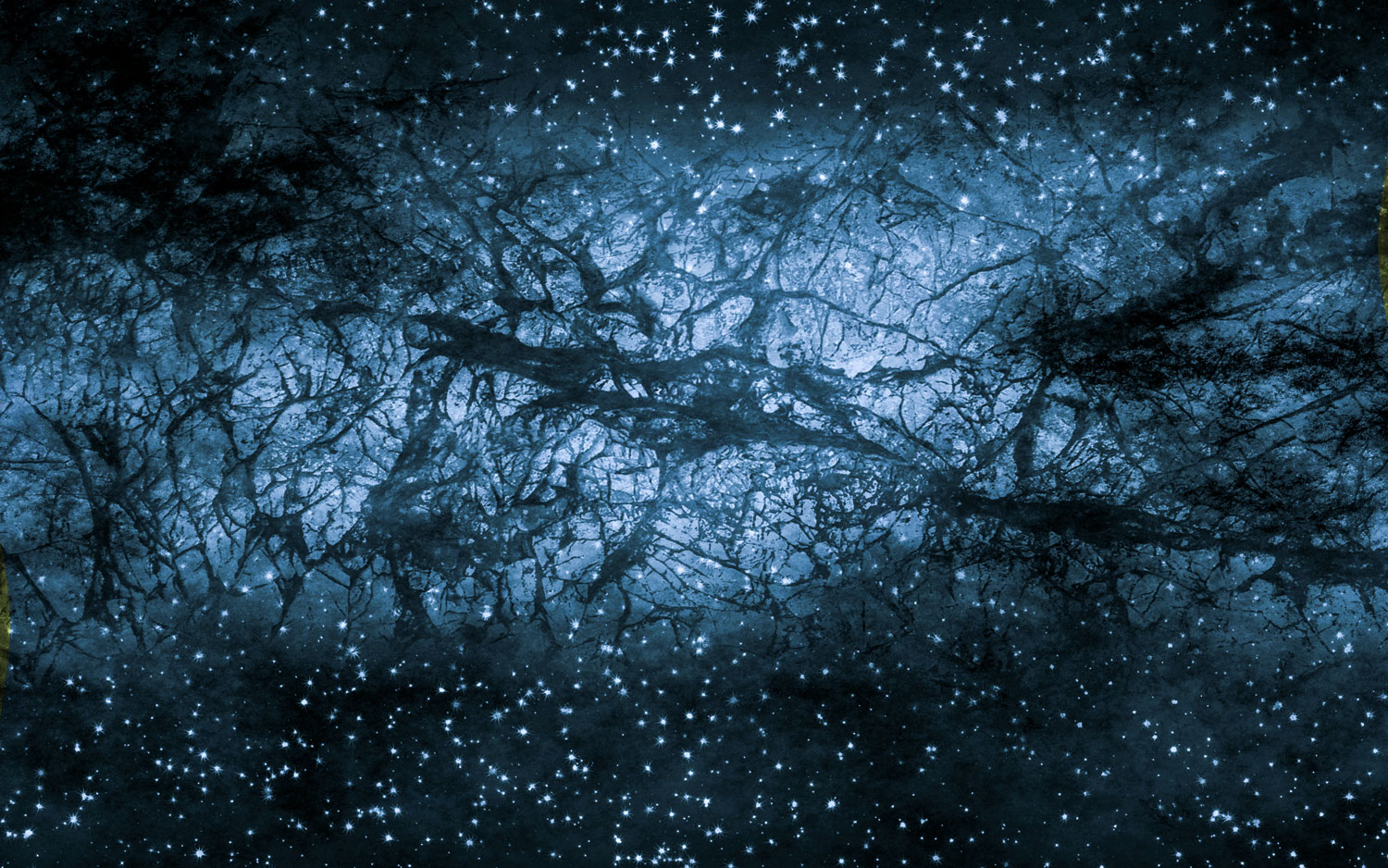Dark 'Half-Magnets' from the Sun Could Be Streaming Through Us Every Day
So far, physicists haven't found any traces of the particles that make up the dark, invisible world.

An invisible substance permeates the universe, altering the paths of stars and galaxies.
This so-called dark matter exerts a gravitational pull, yet never interacts with light. No one knows what it's made of and it has been impossible to detect until now. But a new theory could finally provide a way to test for dark matter. [The 11 Biggest Unanswered Questions About Dark Matter]
Dark matter might be made up of weird half-magnets, theoretical physicists from the University of California, Davis, said at a presentation on June 6 at the Planck 2019 conference in Granada, Spain. And by turning on a really powerful (as-of-yet nonexistent) electron microscope, we might finally be able to detect them.
But not all physicists are convinced.
"I think it's neat, but not very promising," said Sabine Hossenfelder, a research fellow at the Frankfurt Institute for Advanced Studies, who was not a part of the study. "There are infinitely many particles you can invent that may make up dark matter." This is just another one of them, she added.
"For each of these particles you can do lots of calculations, publish papers and think up experiments, which you can then try to get funding for," she said. "If you are really lucky, someone will do your experiment — which will then not find anything."
The quest for dark matter
Though theories predict dark matter exists, we have no idea really what it looks like or what it's made of. For a while, there was "a beautiful story" that dark matter was made up of a lumbering, shy beast of a particle known as a Weakly Interacting Massive Particle, or WIMP, said co-author of the new study, John Terning, a professor of physics at the University of California, Davis.
Get the Space.com Newsletter
Breaking space news, the latest updates on rocket launches, skywatching events and more!
For years, scientists searched for these slow, chargeless particles using powerful particle accelerators. But as time went on, physicists ruled out more and more WIMP candidates— and the popular idea lost traction. Though not completely ruled out, "for the last 10 years, people have been thinking about other possibilities other than WIMPs," Terning said.
Another theory proposes that dark matter is actually made up of particles of light, or photons.
"In addition to the ordinary photons that we can see, there could be some photons that we can't see," Terning said. These so-called "dark photons" are hypothetical particles that have mass, but are lighter than electrons. Dark photons would interact — though rather weakly — with regular photons.
In this new study, Terning and his postdoctoral researcher Christopher Verhaaren built on this theory, proposing that dark matter might also be made up of dark half-magnets.These hypothetical half-magnets would be dark versions of the long-sought monopoles, or magnets that only have a single pole, that physicist Paul Dirac first proposed in the 1930s. (Despite decades of hunting, no one's found any evidence for them in nature yet.)
Dirac didn't just propose monopoles, though; he also proposed that an electron moving around a monopole would be influenced by its magnetic field. So, if Terning and Verhaaren's theory is right, and dark versions of these half-magnets lurk somewhere in the universe — and if those dark half-magnets act like Dirac's monopole — they would also leave subtle clues in the paths of electrons.
If dark monopoles exist, they would emit dark photons that can transform into regular photons before being absorbed by electrons, Terning said. This interaction would cause the electrons to rotate or change course just a tiny bit, producing an interference pattern called the Aharonov-Bohm effect. (Electrons aren't just particles, they're also waves, and an interference pattern is what shows up when the peaks and valleys in the electron's "wave equation" either add up or cancel each other out, creating a series of parallel light and dark lines.) Terning and Verhaaren propose that they might be able to detect this very slight change in electron interference patterns using electron microscopes.
Excited by the sun
If dark matter exists, it is in us and all around us — including in and around any electron-beam microscope we would use to detect it. But to detect dark matter through its perturbation of electrons, the strange half-magnets that make up dark matter would need to have a strong-enough magnetic field. That means that these half-magnets would need to have a lot of energy.
Monopoles that pass near the sun could become excited, gain more energy and then make their way down to Earth, Terning said. He predicts that about five of these excited monopoles a day would go through something the size of their proposed electron-beam microscope. "That's not bad because usual WIMP detectors would be happy if they got five events per year," he said.
In addition, the change in electron phase caused by dark half-magnets would be so tiny that, in order to detect it, we'd need incredibly high-resolution electron-beam microscopes — the ones currently in existence probably aren't powerful enough. This electron microscope would need to have a resolution that's five times greater than those that exist currently, Terning said.
In any case, we hope to "get these people with the super-fancy electron microscopes interested in searching for this" or we "might have to build another one just to sit and wait for dark matter," Terning said.
The various competing theories of dark matter would tell us completely different stories about how the early universe formed, he said. What's more, once you figure out what dark matter is actually made of — whether it's light or heavy particles — people could conceivably create dark-matter factories, of sorts, here on Earth. "If it's very light, you don't need much energy to produce your own dark matter."
The scientists published their study to the preprint journal arXiv. It has not yet been peer-reviewed.
- The Biggest Unsolved Mysteries in Physics
- The Mysterious Physics of 7 Everyday Things
- 8 Ways You Can See Einstein's Theory of Relativity in Real Life
Originally published on Live Science.
Join our Space Forums to keep talking space on the latest missions, night sky and more! And if you have a news tip, correction or comment, let us know at: community@space.com.











